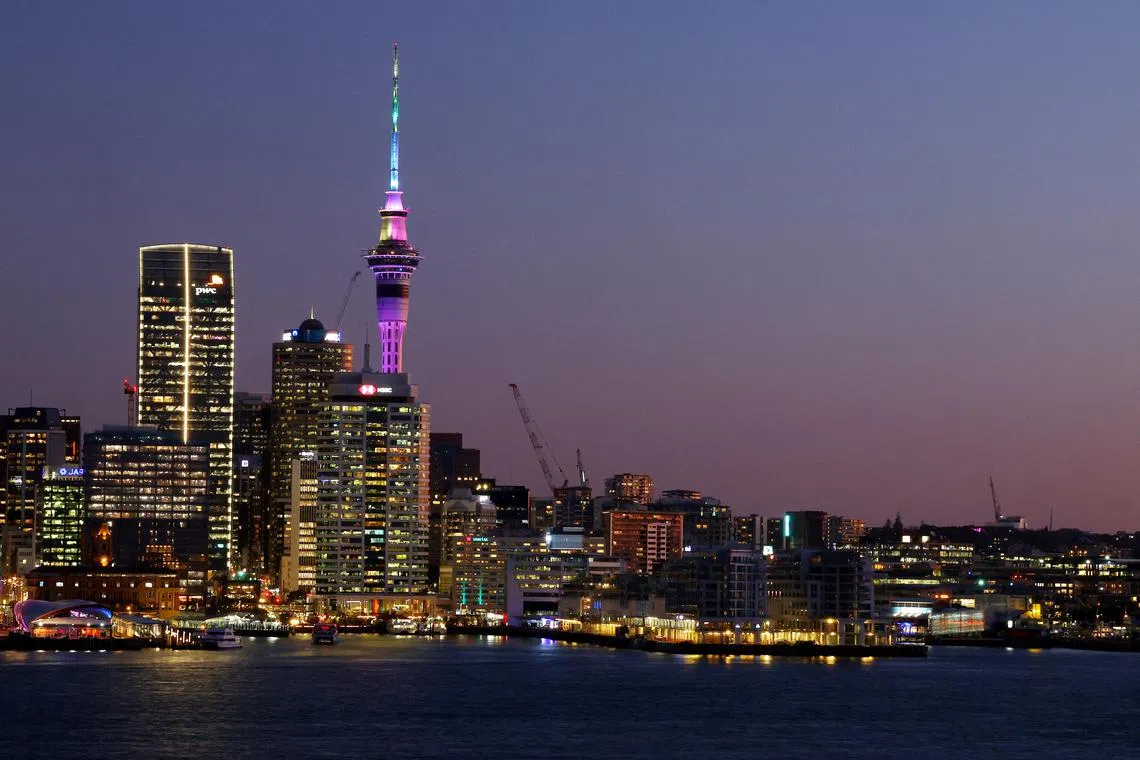New Zealand faces another recession after economy contracts less than expected in second quarter
Sign up now: Get ST's newsletters delivered to your inbox

The New Zealand economy is projected to recover over the year of 2025 as interest rates continue to fall.
PHOTO: REUTERS
Follow topic:
Wellington – New Zealand faces another recession after the economy contracted in the second quarter, albeit by less than what economists and its central bank expected.
Gross domestic product (GDP) declined 0.2 per cent from the previous quarter, when it gained a revised 0.1 per cent, Statistics New Zealand said on Sept 19. Economists expected a 0.4 per cent contraction while the Reserve Bank of New Zealand (RBNZ) projected a 0.5 per cent drop.
From a year earlier, GDP fell 0.5 per cent, which was less than economists’ estimated 0.6 per cent decline.
The economy’s prolonged slump and signs that inflation is back under control prompted the RBNZ to start its easing cycle in August – much sooner than it had previously indicated. The central bank expects the economy to shrink again in the current quarter, which would be its second recession in less than two years.
“The economy is weak, as to be expected after a prolonged period of restrictive monetary policy,” said ASB Bank economist Kim Mundy in Auckland. “Ongoing headwinds, including our expectation for further weakening in the labour market, suggest we are unlikely to see a rapid turnaround in the economy.”
The New Zealand dollar edged lower after the report, buying 62.09 US cents at 11.25am in Wellington (7.25am Singapore time).
Investors now see a less than 50 per cent chance that the RBNZ will deliver a 50 basis point cut when it next reviews the official cash rate (OCR) on Oct 9. The US Federal Reserve began its easing cycle overnight with a 50 point move in a bid to shore up the US economy.
“While financial markets will no doubt fixate on the idea that the Fed’s decision has opened the door for 50 basis point rate cuts elsewhere, there isn’t much in the local data that argues for the RBNZ to step up the pace of easing,” said Mr Michael Gordon, senior economist at Westpac. “We continue to expect the RBNZ to cut the OCR by 25 basis points each at the October and November reviews.”
Statistics NZ revised GDP for the fourth quarter of 2023 to unchanged from a previously reported decline, meaning the nation was not technically in recession in the second half of last year. Still, the economy has contracted in four of the past seven quarters. The previous recession was in the six months until March 2023.
High interest rates have pushed the manufacturing and service sectors into extended downturns, unemployment is rising and house prices are falling.
Further cooling activity, population growth in the three months until June was the slowest in two years.
Confidence has rebounded after the RBNZ pivoted to easing on Aug 14, cutting the OCR to 5.25 per cent, and the economy is projected to recover over 2025 as interest rates continue to fall.
Investors are pricing 75 basis points of cuts across the two remaining RBNZ meetings in 2024, according to swaps data. Most economists project two 25 point reductions. BLOOMBERG

